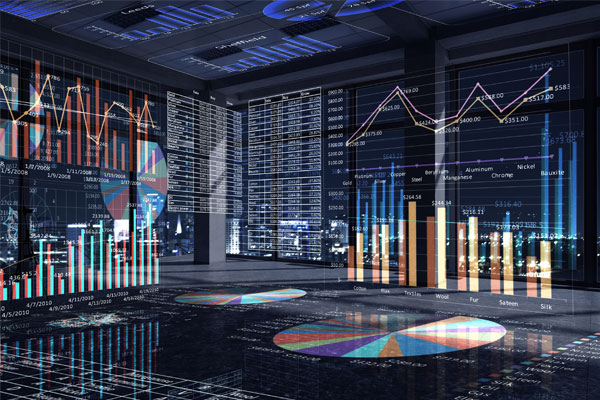I am amazed sometimes by how technology is impacting the world we live in. For example, SpaceX being so successful in reusing spaceships may not have a great impact today, but it does change the way we look at the future, and what we understand by science fiction.
Human Resource is one of those industries which does not quite make its way into science fiction books, and no kid grows up thinking of revolutionizing the technology inside this particular market. Traditionally, HR was always viewed as a paper-intensive, non-innovative area, where salary decisions are made, people get hired or fired and where team building sessions are organized. But behind the scenes, the industry is changing and incorporating technology at a rapid pace, even if it wasn’t designed for HR to start with.
In its 2015 report in collaboration with Globoforce, The Society for Human Resource Management identified employee engagement, talent retention, competitive compensation, and developing the organizational leaders for tomorrow as major human capital challenges.
These challenges have sparked innovation inside HR departments across the world. It is already known that social media is used in recruitment, and it seems 92% of recruiters turn to these channels to identify and validate candidates. But what is maybe less visible and more relevant to the human resource innovation conversation, is the 3% of recruiters, which moved beyond LinkedIn, Facebook and Twitter and are piloting Snapchat as a recruitment tool. Instead of asking themselves if it’s worth pursuing this channel,, they engaged the upcoming working generations on their own “ground”.
Therefore, a good question might be: what are the technological innovations that will drive human resource technology trends in the future?
Virtual and augmented reality
While virtual reality has been around for a few years, consumer applications are barely making strides in the market. Meanwhile, virtual and augmented reality will continue to mature and find its way into the workplace environment. For example, Microsoft is preparing the launch of the Hololens headset which will likely be embraced by human resource professionals in the not-so-distant future.
This type of technology is primed for disrupting talent management and productivity. We can envision the potential of virtual and augment reality in tech-assisted corporate training where employees can use AR and VR for anything ranging from basic onboarding to skill building and on-the-job learning.
Furthermore, in industries looking to enhance tasks on the job, this will become the new normal, as digital information will be superimposed on the physical reality. Onboarding and training in industrial environments can be transformed by adding virtual instructions on top of machinery and tools, as employees engage with the environment.
Advanced Machine Learning
Machine learning is automated data analysis through algorithms that automatically create analytical models. Using algorithms, machine learning programs iteratively learn from large sources of data-building patterns and identify insights without being explicitly instructed and programmed to look for answers, only tot learn to identify data sets.It basically allows for machines to not only collect information from corporate environments, but also learn from it.
This technology can improve the efficiency of the initial analysis that humans can do, allowing people to look at higher level results and focus on more complex analysis as a result.
To date, machine learning applications in the human resource space are mainly focused on predictive analysis and talent relationship, mostly in the recruitment process.
One instance of such an application is PhenomPeople.com, which takes marketing personalization practices and data analysis, and uses them in the recruitment process. Employee engagement is also being targeted, with KPMG apparently developing a proprietary model for enterprise engagement, which is rooted in machine learning algorithms.
Only the future will tell about the advancements of these initiatives.
Autonomous Agents and Things
Robotics continues to grow in terms of task diversity and capacity, as well as autonomy. One of the most advertised examples is the autonomous driving car, but the essential thing about it that often goes unnoticed is the move beyond controlled environments and the expansion into uncontrolled spaces. What this means for human resource management, in the short term, is the need to train and build new skills into existing workforces.
In the future, machine learning and autonomous agents might be the equivalent of HAL from Space Odyssey. These agents have the potential to become an internal information nexus, streamlining communication and increasing efficiency of organizations through access to the right data, at the right time. Applications can vary from recruitment to employee engagement, and they can be used for anything, from organizational transparency to boardroom meetings.
The Internet of Things
Gartner studies show that Internet of Things platforms suffer from fragmentation, leading to inefficiencies in terms of data access. Even so, these platforms will follow a trend of integration throughout the next 5 years, which will lead to more data being available and accessible throughout enterprise environments.
Companies will continue to adopt cloud computing and HR is actually ahead of the curve, with more time being spent on using cloud solutions to efficiently increase workforce productivity than other industries. The increase in use of these tools comes with availability of information, which will push HR expertise into middle management ranks freeing up human resource departments from training middle tier leadership. Part of HR’s functions will be taken over by line managers, while the role of HR will shift to business performance and execution.
We can already see that time-consuming tasks such as keeping track of employees’ time, preferences and work patterns are being automated, freeing up HR to focus on engagement challenges, increasing productivity and aligning the human side of the organization with business goals. HR managers gain more strength at a boardroom level, as their departments move away from cost centers to revenue centers. As systems and objects become more connected, it falls on HR to manage performance.
Wearables
In 2016 we will see more companies turning to the wearables industry, and as consumer markets start to take off, new entrants will look at enterprises for business models. Wearable devices, outfitted with sensors focused mainly on applications in health and fitness, will gain a foothold in the enterprise market.
The enterprise wearables market is expected to reach 18Bn by 2019, visibly impacting the human resources department. While tracking workplace wellness through wearables is most likely the simplest and most straightforward use, applications can vary. Stress management and monitoring can become the norm, especially in environments where it impacts retention. But moving besides health, wearable devices are also enhancing other areas of productivity and employee management.
Virtual reality can also have an impact on employee communication and collaboration. Notifications sequences can be improved based on someone’s focus patterns or scheduled to be sent in idle times, when productivity is not affected. Bittium, for example, created a use case for smart watches in the retail sector, where employees can be notified of required actions based on real-time needs: alert cashiers when to switch turns, customer-facing personnel on where help is needed, etc.
In these cases and more, human resource managers and their departments will transition to being strategic data managers, guiding and managing the information flow to ensure that employees have access to the right data at the right time, and that disturbance is minimal.
While it may be a scary vision of the future for some, and privacy of data will surely be under scrutiny, the role human resources plays in organizations is changing. Driven by data, technology and new interaction models, it is shifting from managing bureaucracy to managing business assets and talent management, and information is the key resource inside this New Age HR.
Last but not least, while reading through technological trends and how they could impact the role of human resources teams across organizations, I came across a field which may not have a direct impact but will surely play a part in the future.
Self-charging phones and wireless electricity
While self-charging technology will not be affecting the way HR operates per se, it can influence work patterns and work modus. As this technology evolves, it has the ability to transform the workplace environment which is still evolving around the need to be connected to electricity. Anyone who has ever been involved in the design and planning of a new office, knows that decisions are taken based on access to electricity and electric cables. The disposition of desks, meeting rooms and work areas is dependent on the availability of electric plugs.
It is only a matter of time before self-charging phones are widely available and this technology reaches laptops, projectors and televisions. Cota, build by Ossia, promises to automatically recharge mobile phones based on perimeter proximity, in a way that’s similar to WiFi internet. Such technology will allow devices to charge even without having them placed on pads.
These developments will free office spaces from the cable stigma, and will allow organizations to redesign the workplace experience, improving the employee experience and thus retention and engagement rates.
The future of any human resource team is being connected to technological development and challenging it offers rooms for innovators inside and outside the industry to adapt new developments to create and redesign the workplace and employee experience. I believe the future will showcase that HR can take a role in the science fiction novels, and innovation in the field will continue to grow as human resource professionals will find new ways to embrace and model the technological development. What will be next?
Image licensed from Dollarphotoclub.com






Very interesting insight on the development of technology and HR.
For one question keeps popping up when reading this.
Are we leading the technology or is ‘it’ leading us?
For as you made the example of the retail employee wearing an smart watch and therefore being aware of real-time needs.
This for sure looks like machines telling people what to do, does it not? Of course this example is a positive one, but it starts racing questions on Machine and human interaction and work ethics? Doesn’t HR have a role in this new field? A field not only in Human Resources but maybe also Artifical Resources (AR od AI) or the cross over in this sence?
Bastiaan, you do have a point. For the time being HR is about human resource management, but as the technology develops the role will most likely shift more towards human information management.
The grim scenario in which machines tell someone what to do is slightly sci-fi at the moment, and it all depends on the rise of artificial intelligence. I would say the next upcoming challenge is how to manage information overload by the workforce, and streamline data flows for efficiency. It is not only HR that has access to these new technologies but the entire company. Therefore, how will the role change considering access to information?
In the case of retail worker being told what to do, we are looking at a fairly complex decision system. Should HR be involved in that? How much?